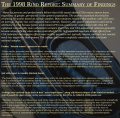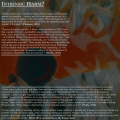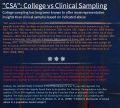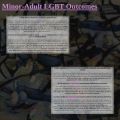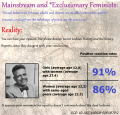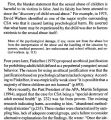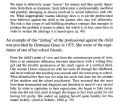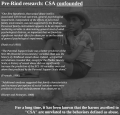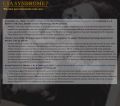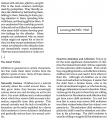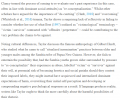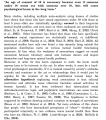One of our staff members is contributing considerably to a News Archiving service at Mu. Any well educated (Masters, PhD or above) users who wish to make comments on news sites, please contact Jim Burton directly rather than using this list, and we can work on maximising view count.
Template:EGLHarm
-
Basic Rind Paradox infographic
-
Summarized Rind findings
-
Rind and Tromovitch (2000) on Iatrogenic Harm
-
Research pointing to no intrinsic harm profiled in The Guardian
-
What victimologists say about youth perception + admissions of iatrogenic harm
-
Self-perception: Importance
-
Some reading on secondary harm and perception/situational variables
-
More secondary harms
-
Intrinsic vs secondary harm
-
Daly's 2021 repetition of Rind (1998), finds that self-perception is far more important that abuse status
-
Lahtinen Report: Most common reason for not reporting - event not serious enough
-
Bender. Sexologist's observations in 1969
-
College outcomes: Benefits of college samples
-
LGBT outcome/perception data (links to papers in this release)
-
Arreola 2009 - Psych outcomes for LGBT "CSA" identical to no sex
-
Simpler way of expressing Lesbian outcomes (ref to modern feminism)
-
Further distillation of Rind's Kinsey analysis
-
Finer analysis of Finnish Victimization Survey (Rind)
-
General reading on intrinsic harm
-
Oellerich on the self-fulfilling prophecy of iatrogenic harm
-
Oellerich comments further on iatrogenic harm
-
CSA harm was known to be confounded even before Rind
-
No "typical" CSA reaction or "syndrome"
-
Rind on methodological issues/limitations of victimology
-
The Lanning (1992) report - full of hysterical conjecture, nevertheless describes the "most common" forms of offender and victim in banal terms that are applicable to most relationships (in order to prepare investigators to pathologize banality)
-
Percy Foundation review of Chloe Taylor: "Foucault, Feminism, & Sex Crimes"
-
2022 debate response
-
Illinois state investigation finds a "pedophile" was his victims' "best friend"

